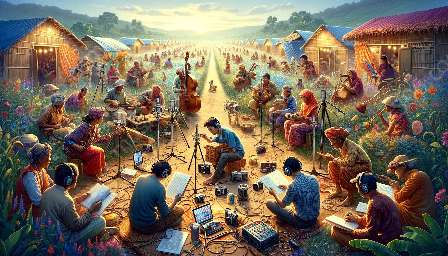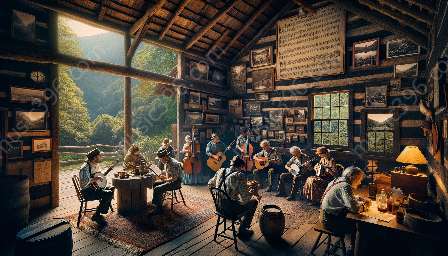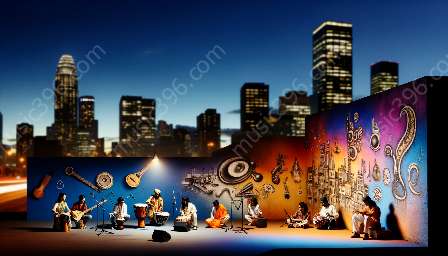Soundscapes and Environmental/Urban Experiences are integral to understanding the influence of sound on our environment and culture.
Exploring this topic through the interdisciplinary fields of ethnomusicology and sound studies opens up a rich tapestry of research, analysis, and understanding of how sound shapes our experiences in urban and natural environments.
The Concept of Soundscapes
Widely popularized by the work of Canadian composer R. Murray Schafer, the concept of soundscapes refers to the sonic environment as perceived by individuals or communities. It encompasses the sounds of nature, human activities, and the built environment, influencing our perception and experience of a place or space.
Understanding Soundscapes through Ethnomusicology
Ethnomusicology, as a discipline, provides a unique lens through which to study soundscapes and their impact on environmental and urban experiences. By examining the cultural, social, and historical contexts of musical and sonic practices, ethnomusicologists can delve into the multifaceted relationships between sound, space, and human behavior.
Urban Soundscapes: Noise, Music, and Identity
In urban settings, soundscapes become intricate tapestries of noise, music, and cultural expression. Ethnomusicologists analyze how urban soundscapes shape identities, social interactions, and power dynamics. Whether it's the rhythmic sounds of a bustling market or the pulsating beats of a nightclub, urban soundscapes reflect the diversity and vibrancy of human experiences.
Environmental Soundscapes: Nature, Ritual, and Ecology
Turning to natural environments, ethnomusicology offers insights into the interplay between sound, nature, and human rituals. From the serene melodies of birdsong to the rhythmic chants of indigenous ceremonies, environmental soundscapes highlight the interconnectedness of culture and ecology. Ethnomusicologists explore how communities engage with and shape their natural surroundings through sonic practices.
Sound Studies and the Urban Environment
Sound studies complement ethnomusicology by examining the broader implications of sound in urban environments. This interdisciplinary field encompasses acoustic ecology, urban planning, and cultural geography, providing a comprehensive framework for analyzing how sound contributes to the fabric of urban spaces.
Acoustic Ecology: Listening and Designing Urban Spaces
Acoustic ecology, a key component of sound studies, emphasizes the intentional design and preservation of sounds in urban environments. It involves understanding how sound influences human behavior, well-being, and the overall quality of urban life. By implementing principles of acoustic ecology, urban planners and designers can create more harmonious and sustainable urban soundscapes.
Technology and Soundscapes: Recording, Mapping, and Experience
Advancements in technology have revolutionized the study and documentation of soundscapes. Ethnomusicologists and sound studies scholars utilize audio recording, mapping tools, and immersive sound experiences to capture, analyze, and comprehend the intricate dynamics of sound in our environments.
Sonic Ethnography: Engaging with Communities
Sonic ethnography, a methodological approach within both ethnomusicology and sound studies, involves immersive fieldwork to understand how sound shapes the experiences of specific communities. By actively participating in and recording sonic practices, researchers gain deeper insights into the cultural, social, and emotional dimensions of soundscapes.
Enhancing Environmental Awareness and Urban Design
Through innovative technological approaches, ethnomusicologists and sound studies scholars contribute to enhancing environmental awareness and urban design. By incorporating community perspectives and engaging with digital mapping technologies, researchers contribute to the development of sustainable and culturally sensitive urban soundscapes.
Conclusion
Soundscapes and Environmental/Urban Experiences provide a captivating window into the intricate relationships between sound, space, culture, and human experiences. Through the interdisciplinary lenses of ethnomusicology and sound studies, scholars continue to unravel the profound influence of sound on our environment and urban landscapes. By embracing the diversity of sonic practices and experiences, we enrich our understanding of the multifaceted tapestries of sound that shape the world around us.



































